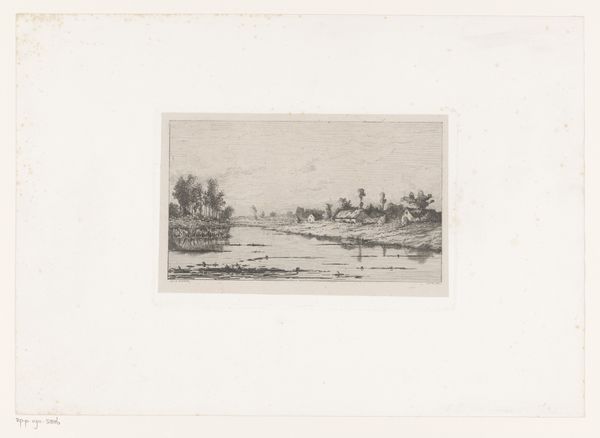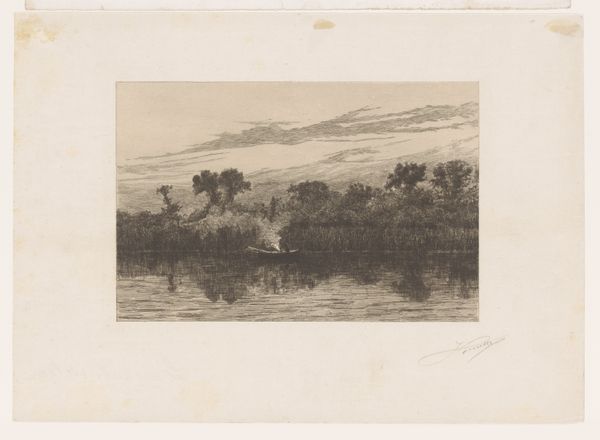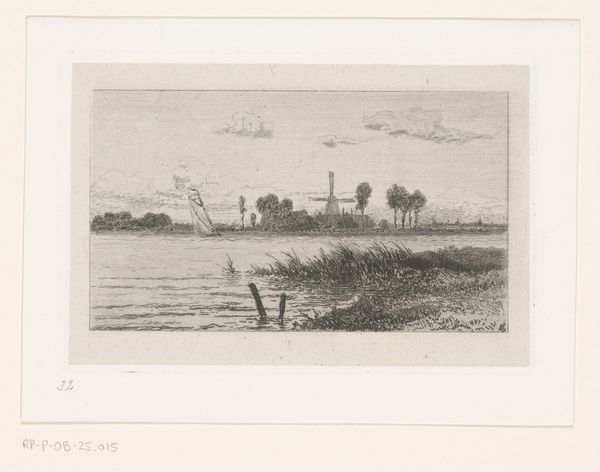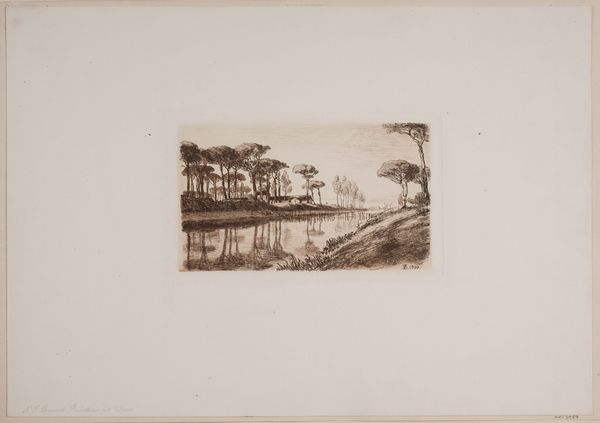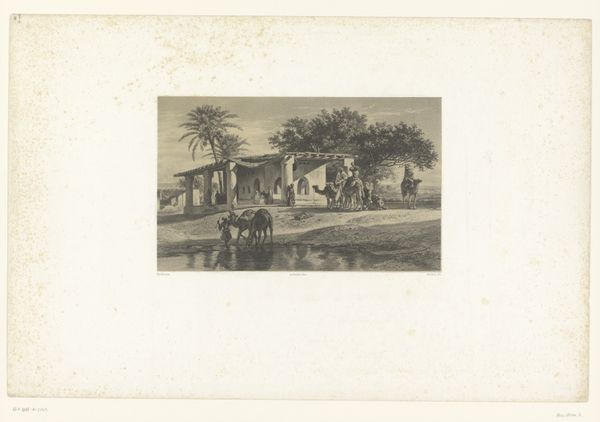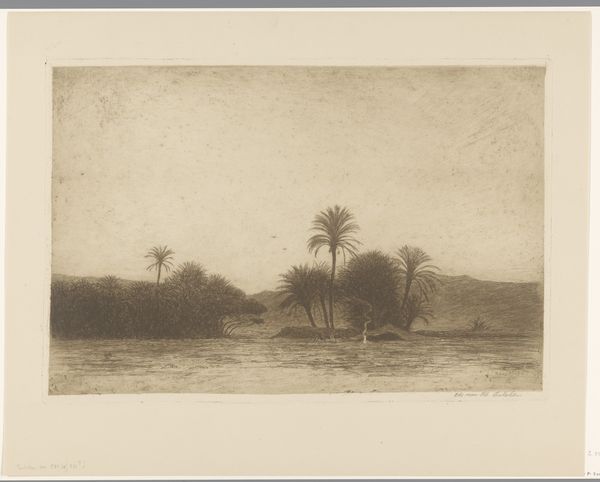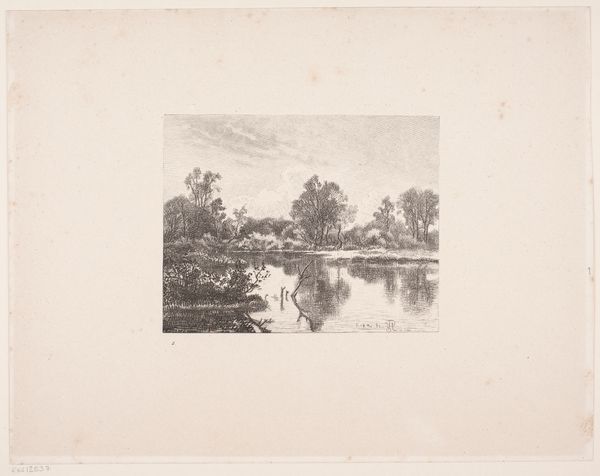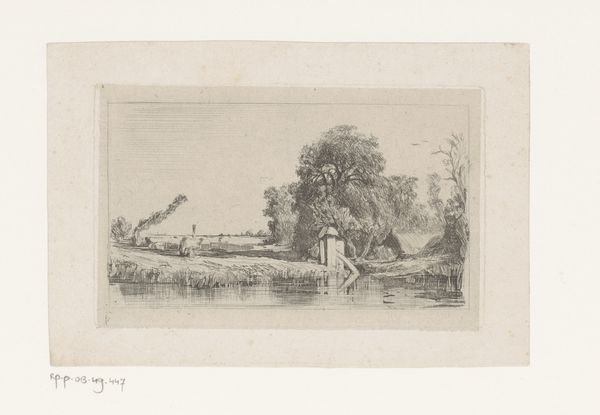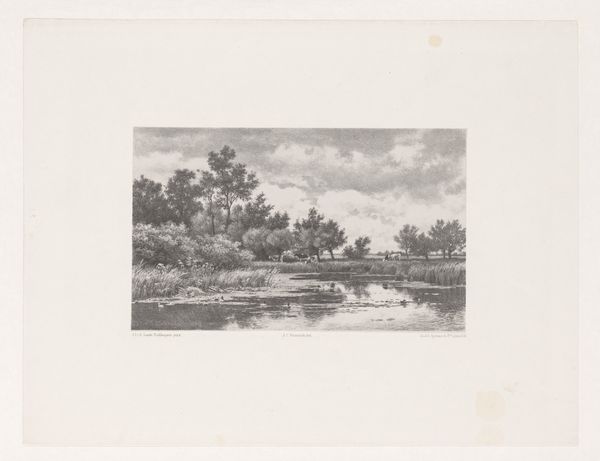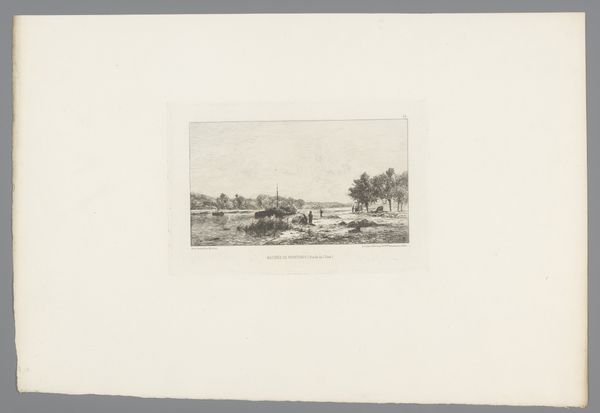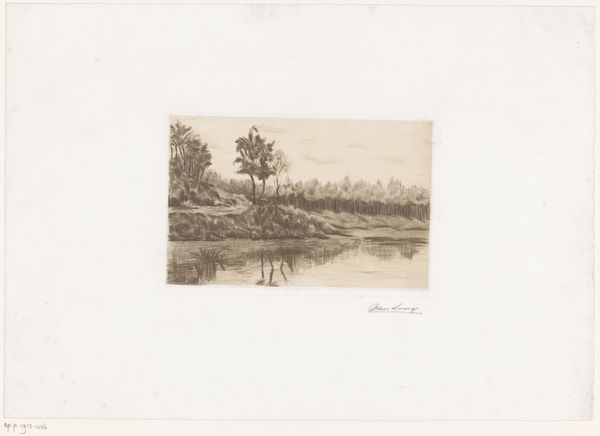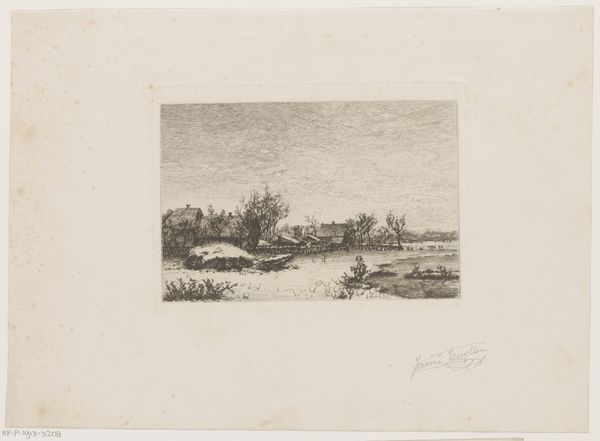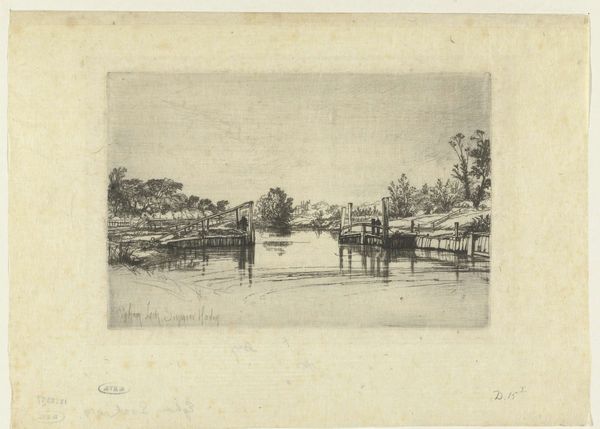
drawing, print, etching, paper, ink
#
drawing
#
art-nouveau
# print
#
pen sketch
#
etching
#
landscape
#
paper
#
ink
#
realism
Dimensions: height 137 mm, width 226 mm
Copyright: Rijks Museum: Open Domain
Editor: So, this is Wijnand Otto Jan Nieuwenkamp’s "Boerderijen aan de Rijpwetering in Zuid-Holland," made in 1901. It’s an etching, and what strikes me is how still and serene it feels. What’s your take? Curator: What I see is a powerful connection to the rise of nationalism and regionalism at the turn of the century. Artists were actively seeking to define a specific Dutch identity. How does this etching contribute to a national narrative? Editor: I guess by focusing on a typical Dutch landscape? The farmhouses, the water… it’s very specific to the Netherlands, isn't it? Curator: Exactly! And the medium, etching, was more accessible than painting, enabling wider distribution. Prints like these reinforced an image of the Dutch homeland and shaped its cultural understanding. Consider the role of art institutions: were images like these displayed in exhibitions or distributed as affordable art for the masses, thus influencing perception? Editor: That makes sense. So it's not just a pretty picture, it's actively constructing a national image? But is that what Nieuwenkamp intended? Curator: That's always the question, isn’t it? Intentionality is difficult to prove. But artists operate within a specific social and political context. How might prevailing attitudes about landscape and nationhood shape artistic production? Editor: This gives me a totally different perspective. I was just seeing a pretty scene, but it’s so much more. Curator: Precisely! Art exists within a web of socio-political forces, subtly shaping and reflecting our world. Editor: I’ll never look at a landscape the same way again. Thanks!
Comments
No comments
Be the first to comment and join the conversation on the ultimate creative platform.
